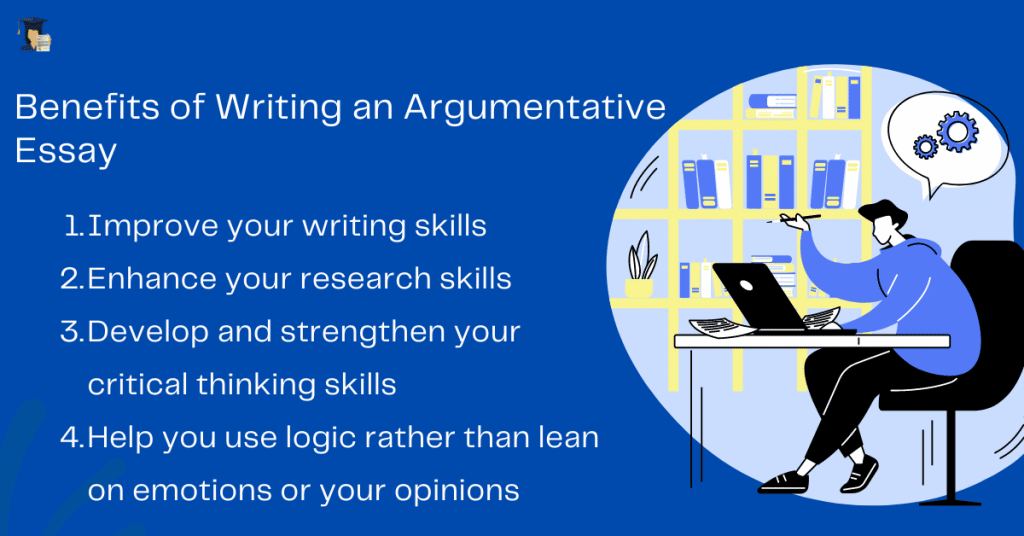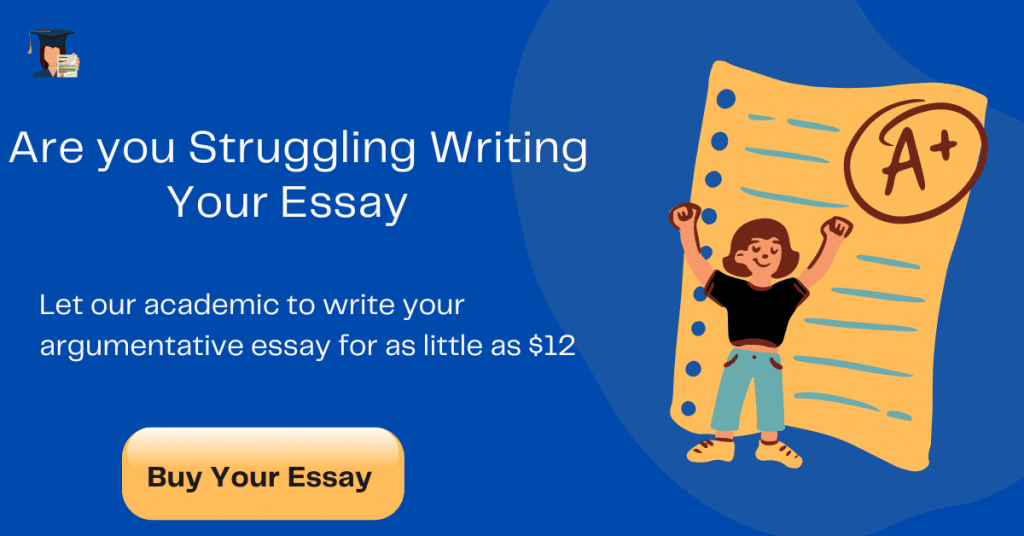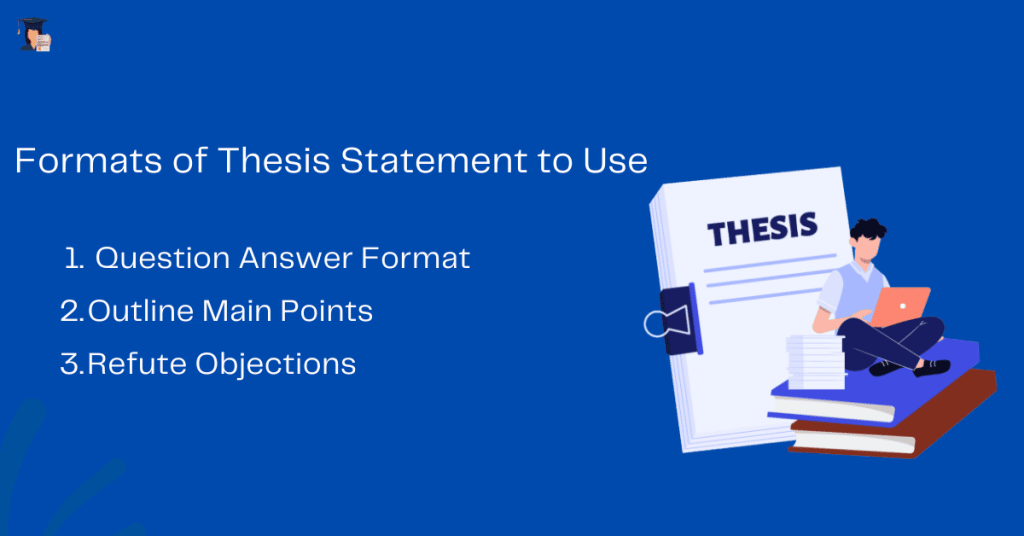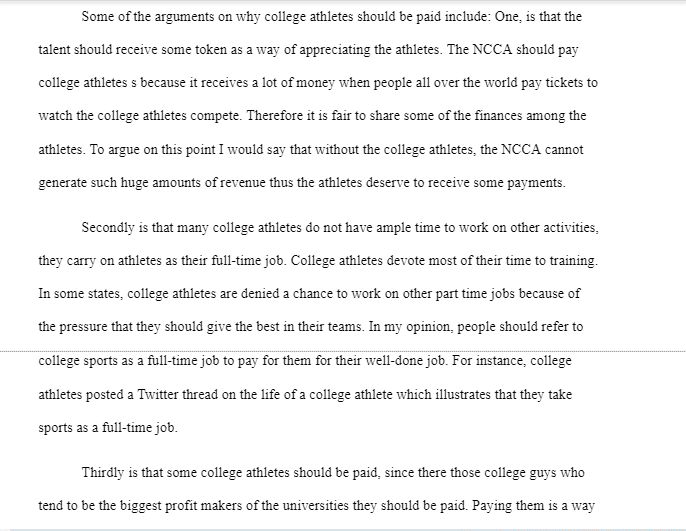An argumentative essay is a style of academic writing where a writer takes a stance on an issue and provides evidence to back it up. While proving the validity of your point, It is essential to provide both sides of an argument. Additionally, the writer should communicate their stand in a clear manner that welcomes the reader to either agree or read further. An example of an argumentative essay is; Discuss the effects of social media on small businesses or Should you be friends with your professor on social media? Our argumentative essay writing experts have provided all the necessary information to know when writing your essay. Enjoy the read on how to write an argumentative essay!
Benefits of Writing an Argumentative Essay
Improve your writing skills.
Writing an argumentative essay requires you to articulate your thoughts and ideas clearly and persuasively, which can help you develop your writing skills. You must organize your thoughts, use clear and concise language, and construct coherent paragraphs and arguments. These skills are valuable not only for academic writing but also for everyday communication.
Enhance your research skills.
Writing an argumentative essay requires researching your topic and finding credible sources to support your arguments. This can help you improve your research skills, evaluate sources for credibility and relevance, and understand how to incorporate evidence to support your arguments.
Develop and strengthen your critical thinking skills.
An argumentative essay requires you to analyze complex issues, evaluate evidence, and weigh different perspectives. This can help you develop and strengthen your critical thinking skills for making informed decisions and solving problems in various contexts.
Help you use logic rather than lean on emotions or your opinions.
An argumentative essay requires you to use logic and reason to support your arguments rather than relying solely on emotions or personal opinions. This can help you become more objective and rational and understand complex issues more deeply.
It allows you to master the art of anticipating objections.
Writing an argumentative essay requires you to anticipate and effectively address your arguments’ objections. This can help you understand the perspectives of those with different views and develop a more nuanced understanding of complex issues. It can also help you become more skilled at persuading others and resolving conflicts in various settings.

Types of Argumentative Essays
There are three main ways to structure an argumentative essay. These include;
Aristotelian (Classical) Model
This is the most frequently used argument strategy. Here, you explain why you support a certain stand. It’s effective when your audience doesn’t have much information or a strong opinion about your topic, as it outlines the facts clearly and concisely. Similarly, this model is used when making straightforward points. In this model, consider the following points;
- Introduce the problem
- Explain your perspective
- Explain your opponent’s perspective. Refute their points one by one as you go.
- Present your evidence
- Conclude your argument
Toulmin Model
The Toulmin model is a common approach in academic essays. It is mainly used when presenting complex issues with no evident truths or when your thesis is a rebuttal or a counterargument. Your Toulmin Model should include the following;
- Make a claim and state your thesis or argument clearly
- Give your reasons. Include data or generally accepted facts
- Explain the warrant. State how the grounds support the claim. This essentially shows the connection between your claim and your reasons
- Back up your claims with evidence
- Qualifier; talk about the limits to your claims, including concessions
- Discuss possible Rebuttals. Address the viewpoints and criticism of your claim.
Rogerian Model
This type of model analyzes two sides of an argument and concludes after weighing the strengths and weaknesses of each. It is mostly used when presenting to a mixed audience. It’s the least confrontational since it presents a middle-ground approach. It would be best if you considered the following;
- Introduce the problem
- Explain your opponent’s perspective first. Validate their points when correct.
- Explain your perspective
- Bring both sides together. Present a middle ground where both viewpoints coexist.
- Conclude your argument
Below is a table that compares the three argumentative essay models
| Model | Approach | Key Features | Strengths | Weaknesses |
|---|---|---|---|---|
| Aristotelian | Classical | Focuses on logical appeals and appeals to authority | Emphasizes clear and logical argumentation, highlights the importance of using evidence and reasoning to support claims | Can oversimplify complex issues, may not be suitable for highly emotional or nuanced topics |
| Toulmin | Modern | Focuses on identifying and analyzing assumptions, developing a strong warrant, and addressing counterarguments | It helps writers identify and address potential weaknesses in their arguments and highlights the importance of considering multiple perspectives. | It can be time-consuming and unsuitable for all types of arguments. |
| Rogerian | Collaborative | Focuses on finding common ground and establishing mutual understanding between opposing viewpoints | Emphasizes the importance of empathy and respect, which can help reduce conflict and promote dialogue | It may not be suitable for highly contentious or polarizing issues and can be challenging to implement effectively. |

Steps on How to Write an Argumentative Essay
Now that you know how to write an argumentative essay, let’s see how the essay is formatted. The argumentative essay template is easy to follow, and it is easy to maneuver around with regular practice. While the format is not static, it follows a particular pattern you need to know. Here are the steps to follow when writing your essay. If you still have difficulty completing your essay after reading how to write it, our academic experts are always available to help you finish it.
Write the Introduction
The introduction should inform the reader what your topic of discussion is. It should also provide brief background information for the reader to understand your argument. Additionally, an introduction should introduce your thesis statement, which should be strong, clear, and concise.
- Use the title to present our point of view
- Briefly introduce your argument. You will debate it in the body paragraph
- Think about your audience: what aspects of this issue would most interest convince them?
- Appeal to the reader’s emotions. Readers are more easily persuaded if they empathize with your viewpoint.
Argumentative Essay Introduction Example

Write the Thesis Statement
If you’re wondering how to write an argumentative essay, one key element to consider is the thesis statement. A clear and concise thesis statement is essential to creating a persuasive and effective argument. Developing a suitable thesis statement should be debatable, focused, reasonable, and have enough supporting evidence. Additionally, the statement should concisely summarize your main points and claims while presenting your stance.
It’s important to remember that your essay will revolve around the thesis statement, so it must be well-written and thought out. Spend time crafting your thesis statement and consider the potential counterarguments or opposing viewpoints you may need to address. Developing a strong and clear thesis statement can create a compelling argumentative essay that effectively communicates your perspective and supports your claims with credible evidence.

So, how do you write one? Here are formats you choose from when writing your argumentative essay thesis statement.
Question/Answer Format
Come up with questions you’d like to have answers to regarding your topic. For instance, you could ask yourself, what is the main cause of depression among the youth? Then you could come up with several answers like unemployment, feeling worthless or inadequate, social media pressure, or family-related issues. After that, your thesis statement could be; Feeling Inadequate or worthless is the main cause of depression among the youth.
Outline Your Main Points
Because you already have a faint idea of what you’ll talk about in your essay, have a sentence or two that briefly discuss your main point and explain how you’ll back it up. For example, the pressure to be successful in life and low self-esteem has made the youth feel inadequate, leading to depression. Remember, you’ll need to be brief.
Refute Objections
Another way to develop a thesis statement is by stating one side of the argument and presenting a refuting statement. For example; While many people believe the youth are depressed because they are soft and sensitive, they are depressed because they feel inadequate and worthless.
Write the Body Paragraphs
You can have three or more paragraphs in your body depending on the complexity of the paper or the number of ideas you have. Each paragraph should cover a different idea introduced with the topic sentence. After that, add the claim, evidence, and concluding statement. It is essential to present undeniable facts from highly regarded sources. This builds trust and generally indicates a solid argument.
When learning how to write an argumentative essay, you can support your claims in this segment with examples, research, and statistics. You can start your first paragraph with the most important point, then proceed to the least important one. To avoid confusing the reader, don’t include any irrelevant information that doesn’t support your thesis statement. It’s also important to cover the opposing viewpoint and arguments. Consider the following when writing the body;
- A topic sentence that supports the thesis statement
- Evidence to support your argument with logic, examples, statistics or anecdotes
- To make your reasons seem plausible, connect them back to the thesis statement
- Talk about the opposing viewpoint and argument. This includes; the objections the readers have. Similarly, answer them with an argument or evidence.
- What other positions do people take on this subject? What is your reason for rejecting these positions?
Argumentative Essay Body Paragraph Example

Conclude Your Essay
A conclusion summarizes all the arguments made in your paper. The first step while writing your conclusion is to restate the thesis statement, summarize your arguments, and present a concluding statement. Ensure you have answered all the readers’ questions and cleared any doubt in their heads. Consider the following;
- How will your argument affect the reader (or the relevant group of people)?
- Present hypotheticals. Use real-life examples of how your ideas will work
- Include a call to action. Inspire the reader to agree with your argument.
- Appeal to the reader’s emotions, morals, character, or logic
A conclusion summarizes all the arguments made in your paper. The first step while writing your conclusion is to restate the thesis statement, summarize your arguments, and present a concluding statement. Ensure you have answered all the readers’ questions and cleared any doubt in their heads. Consider the following;
Argumentative Essay Conclusion Example

How to Write An Argumentative Essay: Basic Structure
If you want to learn how to write an argumentative essay, it’s important to understand the five main elements that typically make up its basic structure. These elements include the introduction, body paragraphs, counterarguments, conclusion, and references, and they can be combined in various ways to create a well-structured and persuasive essay.
- Introduction: This section should begin with a hook that grabs the reader’s attention, followed by some background information on the topic, and end with a clear and concise thesis statement that presents the essay’s main argument.
- Body paragraphs: The body paragraphs of an argumentative essay should each focus on a separate point that supports the thesis statement. Each point should be supported by evidence and reasoning. It’s essential to use transitional phrases to ensure the paragraphs flow logically and coherently.
- Counterarguments: In this section, you should acknowledge potential counterarguments to your thesis statement and provide evidence to refute them. This helps to demonstrate that you have considered multiple perspectives on the issue and strengthens your overall argument.
- Conclusion: The conclusion of an argumentative essay should summarize the essay’s main points and restate the thesis statement in a way that emphasizes its significance. You should avoid introducing new information or arguments in this section.
- References: It’s essential to include a references section to document the sources you used to support your argument. You should follow your discipline’s appropriate citation style (e.g., APA, MLA) and properly cite all sources.
Here is an outline for an argumentative essay
I. Introduction
- Hook: Start with a surprising fact, statistic, or quote that grabs the reader’s attention
- Background: Provide some context and background information on the topic
- Thesis statement: Present your main argument in a clear and concise sentence
II. Body Paragraphs
- Topic sentence: Begin each body paragraph with a clear topic sentence that states the main point you want to make
- Evidence: Provide evidence and examples to support your argument. This may include data, research studies, expert opinions, or anecdotes.
- Analysis: Explain how the evidence supports your argument and connects to the thesis statement. Use logical reasoning and critical thinking to make your case.
III. Counterarguments
- Acknowledge opposing viewpoints: Discuss potential counterarguments or objections to your argument. Be fair and objective in your analysis.
- Refute counterarguments: Provide evidence and reasoning to show why the counterarguments are flawed or incomplete. This strengthens your argument by demonstrating that you have considered other perspectives.
IV. Conclusion
- Summarize main points: Restate the thesis statement and summarize the main points made in the essay.
- Concluding statement: End with a strong concluding statement that emphasizes the significance of your argument and leaves a lasting impression on the reader.
V. References
- Include a references section that lists all sources cited in the essay. Follow the appropriate citation style for your discipline.
 How to Write An Argumentative Essay: Common Mistakes Made By College Students
How to Write An Argumentative Essay: Common Mistakes Made By College Students
Let’s discuss how to write an argumentative essay by looking at college students’ common mistakes.
Lack of clarity and organization
One of the most common mistakes college students make when writing argumentative essays is a lack of clarity and organization. Students may fail to clearly state their thesis statement, which makes it difficult for the reader to understand their argument. They may also lack logical progression and organization of ideas, with their writing appearing disjointed and unstructured. Weak transitions between paragraphs and arguments can make the essay difficult to follow. Students may fail to focus on the main argument, lacking coherence and clarity.
Insufficient evidence and support
Another common mistake made by college students is insufficient evidence and support. Students may fail to provide enough evidence to support their argument, which weakens their entire essay. They may also rely on weak or unreliable sources that do not sufficiently support their argument. Students may also fail to consider and address counterarguments, making their arguments appear weak and one-sided. Over-reliance on personal opinions or emotional appeals can also undermine the argument’s credibility.
Poor writing style and grammar
Poor writing style and grammar are common for college students writing argumentative essays. Students may use inappropriate or informal language that does not convey a sense of professionalism or academic rigor. They may also lack proper grammar, punctuation, and spelling, making the essay difficult to read and understand. Overly complex or convoluted sentences and ideas can be confusing, and failure to proofread and edit the essay thoroughly can result in errors and inconsistencies.
Lack of critical thinking and analysis
Some students may struggle with critical thinking and analysis when writing argumentative essays. They may fail to consider multiple perspectives and opposing viewpoints, making their argument appear weak or biased. Insufficient analysis and reasoning to support the argument can also undermine the credibility of the essay. Overgeneralization or oversimplification of complex issues can also be problematic, leading to a lack of nuance and depth. Inadequate engagement with the relevant literature and research can also be an issue, making the essay appear uninformed or lacking in rigor.
Failure to meet assignment requirements
Finally, some students may fail to meet assignment requirements when writing argumentative essays. This can include failing to follow the assignment instructions and guidelines, such as failing to adhere to the appropriate citation style or meeting the length and formatting requirements. Late essay submission can also be problematic, resulting in a lower grade or other penalties.
Tips On How To Write An Argumentative Essay
Here are tips to help you write a perfect essay:
Do Extensive Research
You can never underestimate the importance of thorough research when writing a compelling argumentative essay. Depending on your thesis statement and argumentative essay topic, you should be able to determine what type of data will most benefit your writing. You may decide to go for primary data. This type of data is not published, and this, therefore, means you have to conduct the primary research yourself.
Decide whether you need to come up with questionnaires, surveys, or interview people. Once you know what you need to do, get to it immediately. Also, have a chronological way of recording your findings. On the other hand, you can use secondary data. Such data is available in previously published works. For secondary data, you must spend a lot of time in a library or surfing the internet for information.
It is advisable to liaise with a librarian if you intend to use secondary data. Likewise, it is important to have a chronological way of recording the data to make it easier to write an argumentative essay.
Brainstorm
Before you start writing your essay, you’ll need to develop a good topic. Therefore, based on your knowledge, write a list of ideas that will give you a good topic of discussion. This helps you choose the best topics. Having a topic that interests and engages you and the reader is important.
Have a Clear, Concise Thesis Statement
A thesis statement is the central argument of your paper. It is usually a sentence or two long. And it’s main aim is to tell the reader what your essay will be about. A clear, concise thesis statement allows you to focus on one point. For this reason, you won’t include any unnecessary information to confuse the reader. The narrower the thesis, the more effective your argument will be. Thus, remember to choose a thesis with sufficient evidence.
Plan Your Essay
Planning your essay is easy once you have established what you want to write about. Your topic of discussion might be based on your understanding of the topic or the information gathered from research. It is advisable to draw up your conclusion before you start writing. This will give you the flow of your essay from start to end. How you plan your essay is also dependent on the argumentative essay outline. The outline will determine the structure of your essay and how many paragraphs you’ll have depending on the main points of discussion.
Support Your Argument With Concrete Facts
An argumentative essay requires credible information and convincing data to support your arguments. This makes your arguments stronger and more reliable and increases your chance of getting a good grade. Similarly, attribute your sources of information to avoid plagiarism. A strong argument is supported with concrete facts.
Be Proactive About Language
Just because you are trying to let the writer see things through your eyes doesn’t mean you must be aggressive or rude. Be respectful and carefully check your words, especially when criticizing someone else’s work.
Use Clear and Logical Transitions
For an informative essay that is easy to read and understand, use logical transitions between the introduction, body, and conclusion. Therefore, use suitable transition words. Hence, your essay will have a good flow, and the reader won’t have a problem jumping from one idea to another.
Present your Argument with Evidence
A good essay has enough supporting evidence to back up your claims. Each point you present in the essay should be supported by evidence. Consequently, your evidence needs to be credible and factual. Remember, you must give citations and references depending on where you’ve gathered your evidence.
Start Writing Your Argumentative Essay
Learning how to write an argumentative essay might seem like a lot of work, but you are good to go once you know the following steps. Remember, don’t include your opinion or feelings about a particular issue in the essay. Instead, stick to the facts and evidence. Ensure you have an outline before you start writing; don’t forget to edit and proofread your work when you are done. Remember to stick to the word count provided; if you have no idea how to achieve that, this post will help you.

Argumentative Essay Full Example

Here are more argumentative essay examples that will show you how to write an argumentative essay
To start an argumentative essay, you should begin with a hook that grabs the reader’s attention. This can be a surprising fact, statistic, or quote. Then provide some background information on the topic, and end with a clear and concise thesis statement that presents the essay’s main argument.
The five parts of an argumentative essay include the introduction, body paragraphs, counterarguments, conclusion, and references. The introduction presents the thesis statement and background information. The body paragraphs provide evidence and support for the argument, while the counterarguments acknowledge opposing viewpoints. The conclusion summarizes the main points and reiterates the thesis statement, and the references section documents the sources used in the essay.
In an argumentative essay, you should avoid relying solely on personal opinions or emotional appeals, using inappropriate or informal language, failing to provide enough evidence to support the argument, ignoring counterarguments, and introducing new information or arguments in the conclusion. Following the appropriate citation style and meeting the assignment requirements is also important.



